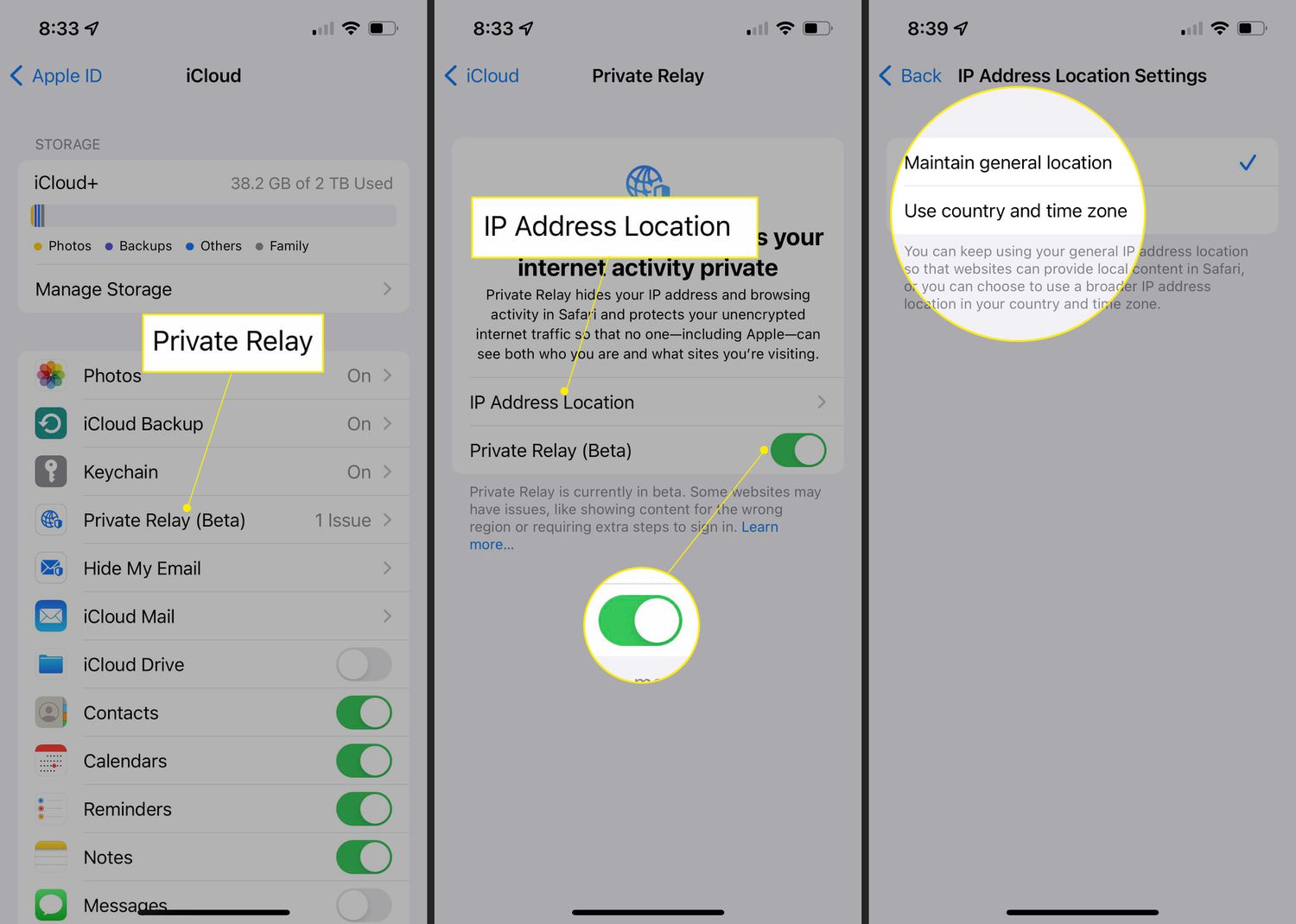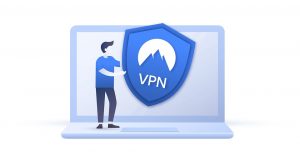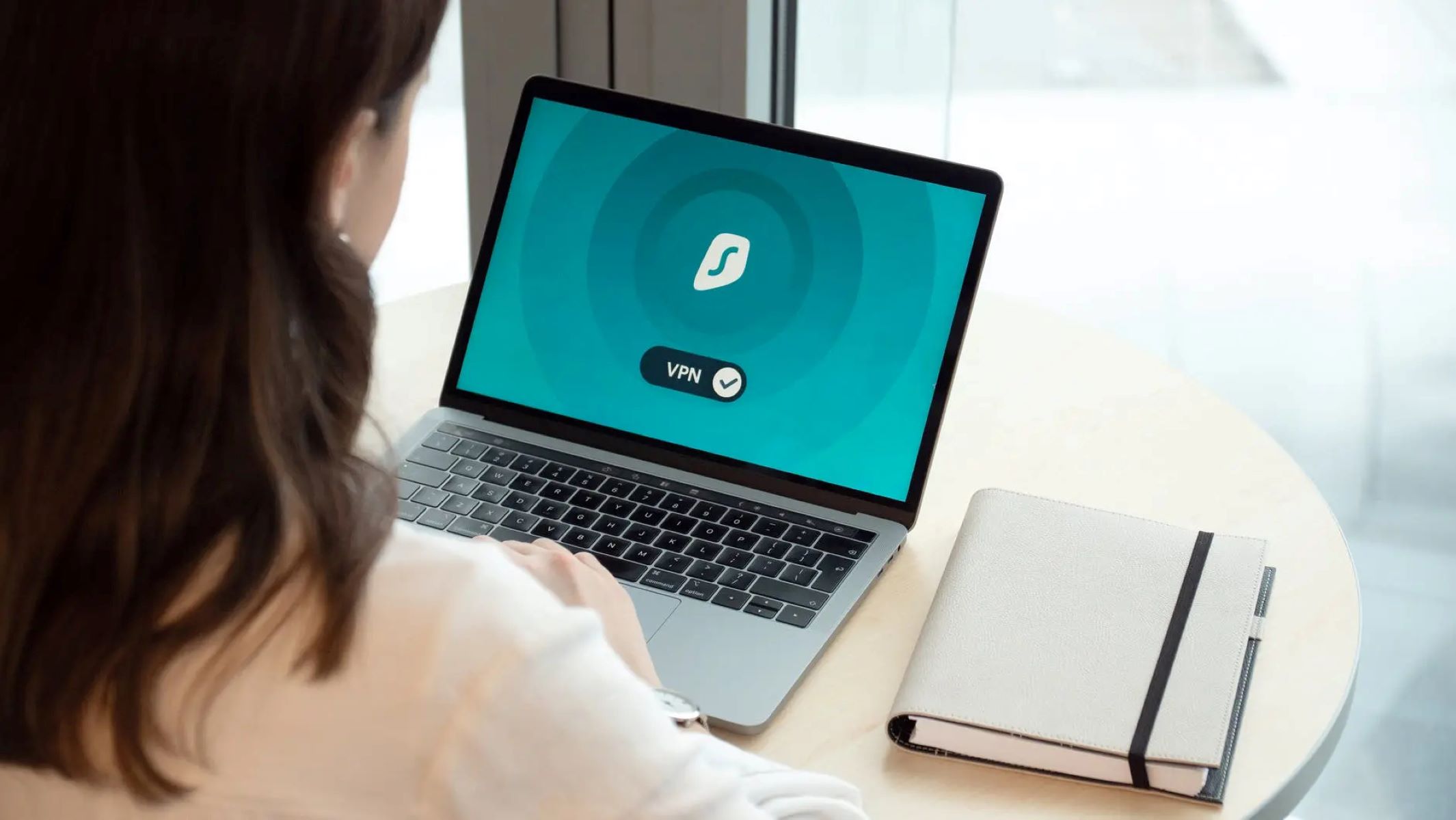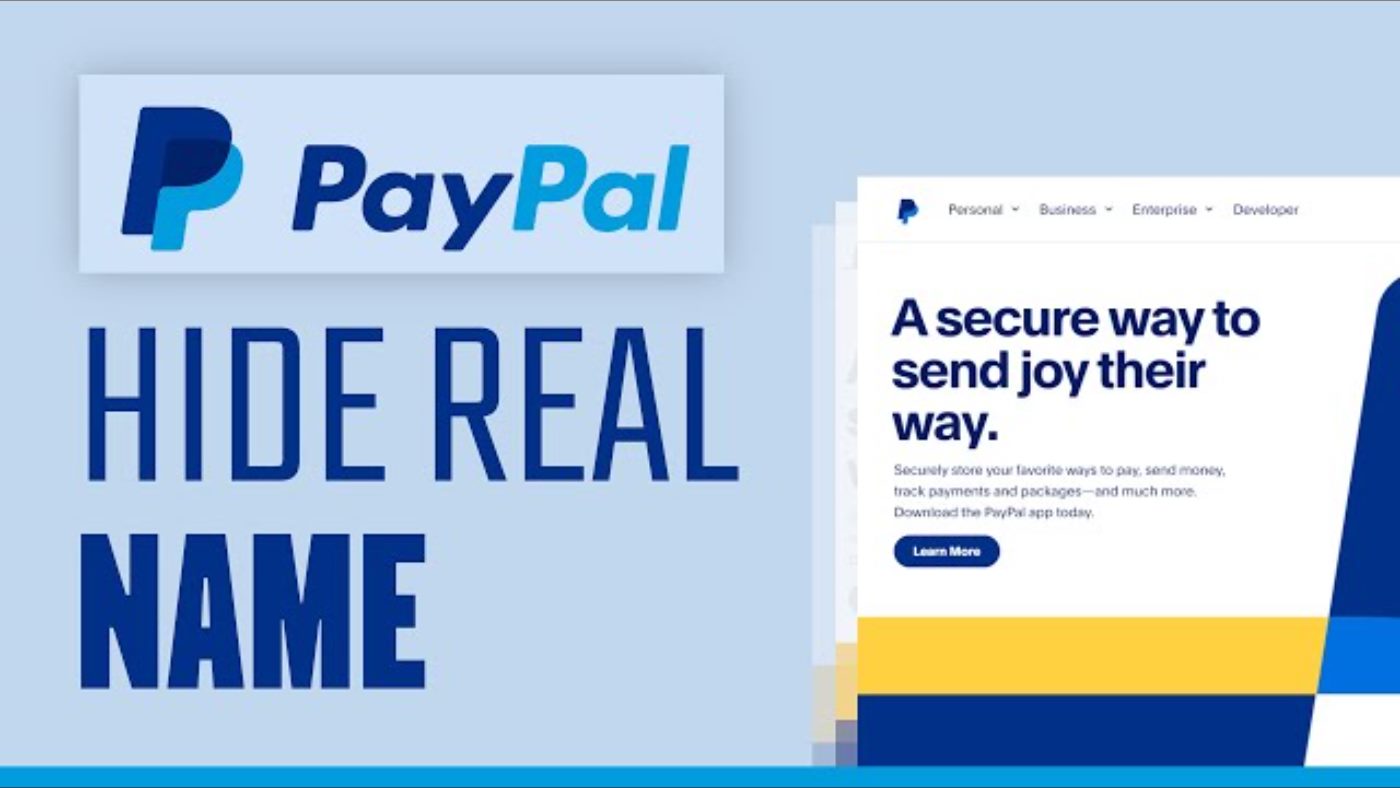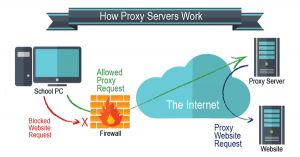Introduction
Protecting your online privacy and anonymity has become increasingly important in today’s digital age. One effective way to safeguard your identity is by hiding your IP address. Your IP address is a unique identifier that reveals your location and online activity to websites and other online entities. By masking your IP address, you can browse the internet more securely and anonymously.
While using a VPN (Virtual Private Network) is one popular method to hide your IP address, there are alternative approaches that you can consider. These methods are especially useful if you need a quick solution or prefer not to use a VPN for various reasons.
In this article, we will explore different methods to hide your IP address without using a VPN. Whether you’re concerned about privacy, want to access geo-restricted content, or simply curious about securing your online presence, these methods can help keep your identity hidden while browsing the internet.
It’s important to note that each method has its own advantages and limitations. You should select the method that best suits your needs and take precautions to ensure the security of your online activities.
Now, let’s take a closer look at these methods and how you can hide your IP address without relying on a VPN. Whether you’re a tech-savvy individual or a beginner, there’s a method for everyone to explore.
Method 1: Using a Proxy Server
A proxy server acts as an intermediary between your device and the websites you visit. It can mask your IP address by forwarding your internet traffic through a different IP address. This allows you to browse the web anonymously as websites only see the IP address of the proxy server, not your actual IP address.
Here’s how you can use a proxy server to hide your IP address:
- Search for a reliable proxy server. There are many free and paid proxy services available online.
- Select a proxy server from the options provided. Look for one that offers secure and anonymous browsing.
- Configure your web browser to use the proxy server. This can usually be done in the settings or options menu of your browser.
- Once the proxy server is set up, visit a website that displays your IP address. You can easily find such websites by searching “What is my IP address” on a search engine.
- Check the displayed IP address. It should be different from your actual IP address, indicating that the proxy server is successfully hiding your IP.
Using a proxy server can be a quick and easy method to hide your IP address. However, it’s important to choose a reputable proxy server that prioritizes privacy and security. Free proxy servers may come with limitations or intrusive ads, so consider opting for a paid service if you require consistent and reliable protection.
Remember that while using a proxy server can hide your IP address, it doesn’t encrypt your traffic like a VPN would. This means that your data may still be visible to your ISP (Internet Service Provider) or anyone monitoring the network. If you require enhanced security and privacy, consider using additional methods or opting for a VPN.
Now that you know how to use a proxy server to hide your IP address, let’s explore another method that can provide anonymity while browsing the web.
Method 2: Using Tor Browser
If you’re looking for an advanced and highly secure way to hide your IP address, the Tor Browser is an excellent option. Tor, short for The Onion Router, is a network of volunteer-operated servers that allows users to browse the internet anonymously.
Here’s how you can use Tor Browser to hide your IP address:
- Download and install the Tor Browser from the official Tor Project website. It’s available for Windows, Mac, and Linux operating systems.
- Launch the Tor Browser and wait for the connection to establish. This may take a few moments as the browser connects to the Tor network.
- Once the connection is established, you can access the internet through the Tor network. The Tor Browser automatically routes your internet traffic through a series of encrypted relays, hiding your IP address in the process.
- Use the Tor Browser like any other web browser to browse websites, access content, and communicate online. Keep in mind that Tor may slow down your browsing speed due to the multiple layers of encryption.
- To verify that your IP address is hidden, visit a website that displays your IP address. You should see an IP address different from your actual one, indicating that your identity is protected.
It’s important to note that while using the Tor Browser provides a high level of anonymity, it may not be suitable for all online activities. Some websites may block access from Tor exit nodes, and certain functionalities, such as accessing streaming services, may not work as expected.
Additionally, it’s crucial to practice good online security habits while using Tor. Avoid downloading files from untrustworthy sources and be cautious when sharing personal information online. Tor can protect your IP address, but it doesn’t provide full protection against malware or other online threats.
If you prioritize anonymity and are willing to tolerate slower browsing speeds, the Tor Browser is a powerful tool for hiding your IP address and maintaining your privacy while online.
Now that you know how to use the Tor Browser to hide your IP address, let’s explore another method that can provide similar results.
Method 3: Using a Web-based Proxy
If you’re looking for a quick and convenient way to hide your IP address without the need for installations or configurations, using a web-based proxy can be a suitable choice. These online proxy services allow you to access websites anonymously by rerouting your internet traffic through their servers.
Follow these steps to use a web-based proxy:
- Search for a reputable web-based proxy service. There are many available online.
- Visit the website of the web-based proxy service you’ve chosen.
- Locate the input field on the proxy website where you can enter the URL of the website you want to access anonymously.
- Enter the URL of the website and click on the “Go” or “Browse” button.
- The web-based proxy will retrieve the content of the desired website and display it to you while hiding your IP address.
Using a web-based proxy can be a convenient option when you want to quickly access a specific website without revealing your IP address. However, there are a few considerations to keep in mind. First, not all websites may work correctly with web-based proxies, especially those with advanced security measures in place. Second, the reliability and privacy of web-based proxies can vary, so choose a reputable and trusted service.
Furthermore, since the web-based proxy acts as a middleman between you and the destination website, be cautious when providing any sensitive information while using this method. It’s always recommended to avoid entering personal data or login credentials when using a proxy service.
Now that you’re familiar with using a web-based proxy to hide your IP address, let’s explore another method that can provide alternative ways to protect your online identity.
Method 4: Changing DNS Settings
Changing your DNS (Domain Name System) settings is another method you can utilize to hide your IP address. DNS is responsible for translating domain names into IP addresses, allowing you to access websites by typing in their names instead of their numerical IP addresses.
Here’s how you can change your DNS settings to hide your IP address:
- Open the network settings on your device. This can usually be found in the system settings or control panel.
- Locate the DNS settings or DNS server settings.
- Configure your DNS settings by entering the IP address of a specific DNS provider or opting for a public DNS service like Google DNS or Cloudflare DNS.
- Save the changes and exit the settings.
Changing your DNS settings can potentially hide your IP address by directing your internet traffic through a different DNS server. However, it’s important to note that this method may not provide complete anonymity, as your internet service provider can still monitor your online activities.
In addition to potentially hiding your IP address, changing your DNS settings can also offer other benefits such as improved browsing speed, enhanced security, and access to region-blocked content. However, keep in mind that changing your DNS settings may not always work as intended, and it might be necessary to revert to your default settings if you encounter connection issues.
Before making any changes to your DNS settings, it’s advisable to research reliable DNS providers and understand the potential implications. Additionally, regularly checking for updates and security patches for your DNS settings can help maintain the integrity of your online presence.
Now that you know how to change your DNS settings to potentially hide your IP address, let’s explore another method that can help you achieve anonymity while browsing the internet.
Method 5: Using the IP Address of a Different Device on the Same Network
If you’re connected to a local network, such as a home or office network, you can utilize the IP address of another device on the same network to hide your own IP address. This method can be useful if you want to maintain your privacy within a closed network environment.
Here’s how you can use the IP address of a different device on the same network to hide your IP:
- Identify a device on the local network whose IP address you wish to use.
- Access the network settings on your device. This can usually be found in the system settings or control panel.
- Configure your network settings by manually entering the IP address of the chosen device.
- Save the changes and exit the settings.
By substituting your own IP address with that of another device on the same network, you effectively mask your real IP address while browsing the internet. However, it’s important to keep in mind that this method only provides privacy within the local network and does not protect your IP address from external entities or websites.
Furthermore, it’s worth noting that using the IP address of another device on the same network may temporarily disrupt network connectivity for that device. This method should be used with caution and with the consent of the device owner.
Remember, while this method may offer some level of IP address anonymity within a closed network, it is not a foolproof solution. If you require stronger anonymity or need to hide your IP address from external entities, consider using other methods like proxy servers, VPNs, or the Tor Browser.
Now that you know how to use the IP address of a different device on the same network to potentially hide your IP, let’s explore another method that can offer additional layers of anonymity.
Method 6: Using a Public Wi-Fi Network
Using a public Wi-Fi network can be another effective method to hide your IP address. When you connect to a public Wi-Fi network, your internet traffic is routed through the network’s IP address rather than your own. This can help conceal your identity and make it more difficult for websites to track your online activities.
Here’s how you can use a public Wi-Fi network to hide your IP address:
- Find a trusted public Wi-Fi network to connect to. This can be a coffee shop, library, restaurant, or any other establishment that offers free or paid Wi-Fi access.
- Enable Wi-Fi on your device and select the appropriate network from the available options.
- Connect to the selected Wi-Fi network by entering any required login credentials or following the provided instructions.
- Once connected, your device will be assigned an IP address from the public Wi-Fi network, effectively hiding your own IP address.
While using a public Wi-Fi network can provide IP address anonymity, it’s important to be aware of the potential risks involved. Public Wi-Fi networks are often targeted by hackers and malicious actors, who may attempt to intercept your data or gain unauthorized access to your device. To mitigate these risks, consider following these best practices:
- Avoid accessing sensitive or personal information while connected to a public Wi-Fi network.
- Ensure that the Wi-Fi network you are connecting to is legitimate and secure.
- Use a reliable and up-to-date antivirus or security software on your device.
- Consider using a VPN (Virtual Private Network) in conjunction with the public Wi-Fi network for an added layer of security and privacy.
Keep in mind that while using a public Wi-Fi network can hide your IP address, it does not secure your internet traffic or protect against other types of online threats. It’s crucial to exercise caution and take necessary precautions when using public Wi-Fi networks.
Now that you know how to use a public Wi-Fi network to potentially hide your IP address, let’s explore another method that can help you achieve anonymity while browsing the internet.
Method 7: Disconnect and Reconnect Your Internet Connection
If you are looking for a simple and quick method to potentially hide your IP address, you can try disconnecting and reconnecting your internet connection. This can help assign you a new IP address from your Internet Service Provider (ISP), effectively concealing your previous IP address.
Here’s how you can try disconnecting and reconnecting your internet connection to hide your IP address:
- Locate the network icon in your system tray or taskbar.
- Right-click on the network icon and select “Disconnect” or a similar option.
- Wait for a few moments, then right-click on the network icon again and select “Connect” or a similar option to reconnect to the internet.
By disconnecting and reconnecting your internet connection, your ISP will assign you a new IP address. This can help mask your real IP address and provide a temporary layer of anonymity while browsing the internet.
While this method may work in some cases, it’s important to note that the effectiveness of hiding your IP address through this method can vary. Some ISPs may assign you the same IP address after reconnecting, while others may provide a different one. Additionally, this method does not provide encryption or secure your internet traffic, so it’s advisable to use additional methods like a VPN for enhanced privacy and security.
If you are looking for a more reliable and long-term solution to hide your IP address, consider exploring other methods mentioned in this article, such as using a proxy server, the Tor Browser, or changing your DNS settings.
Now that you know how to potentially hide your IP address by disconnecting and reconnecting your internet connection, let’s summarize what we have learned so far.
Conclusion
Hiding your IP address is an essential step to protect your online privacy and maintain anonymity while browsing the internet. While VPNs are commonly used for this purpose, there are alternative methods that can help you achieve the same results without relying on a VPN.
In this article, we explored several methods to hide your IP address without using a VPN. These methods included using a proxy server, utilizing the Tor Browser, leveraging web-based proxies, changing your DNS settings, using the IP address of a different device on the same network, connecting to a public Wi-Fi network, and disconnecting and reconnecting your internet connection.
Each method has its own advantages and limitations. Proxy servers and web-based proxies provide a quick and easy way to hide your IP address, but they may not offer the same level of security and privacy as a VPN. The Tor Browser, on the other hand, provides advanced anonymity by routing your internet traffic through a network of encrypted relays.
Changing your DNS settings or using the IP address of another device on the same network can provide temporary IP address anonymity within a closed network environment. Connecting to a public Wi-Fi network can also help hide your IP address, but it comes with potential risks and requires caution to maintain security.
Lastly, disconnecting and reconnecting your internet connection can assign you a new IP address, giving you temporary anonymity. However, the effectiveness of this method may vary, and it does not provide encryption or secure your internet traffic.
It’s important to choose the method that best suits your needs and take additional precautions to ensure your online security and privacy. Consider combining different methods or opting for a VPN for a more comprehensive solution.
Remember, while these methods can help hide your IP address, they do not guarantee complete anonymity or protection from all online threats. It’s always advisable to practice safe browsing habits, use strong passwords, keep your devices and software up to date, and be cautious when sharing personal information online.
By implementing these methods and maintaining a proactive approach to online privacy, you can enjoy a more secure and anonymous browsing experience.










